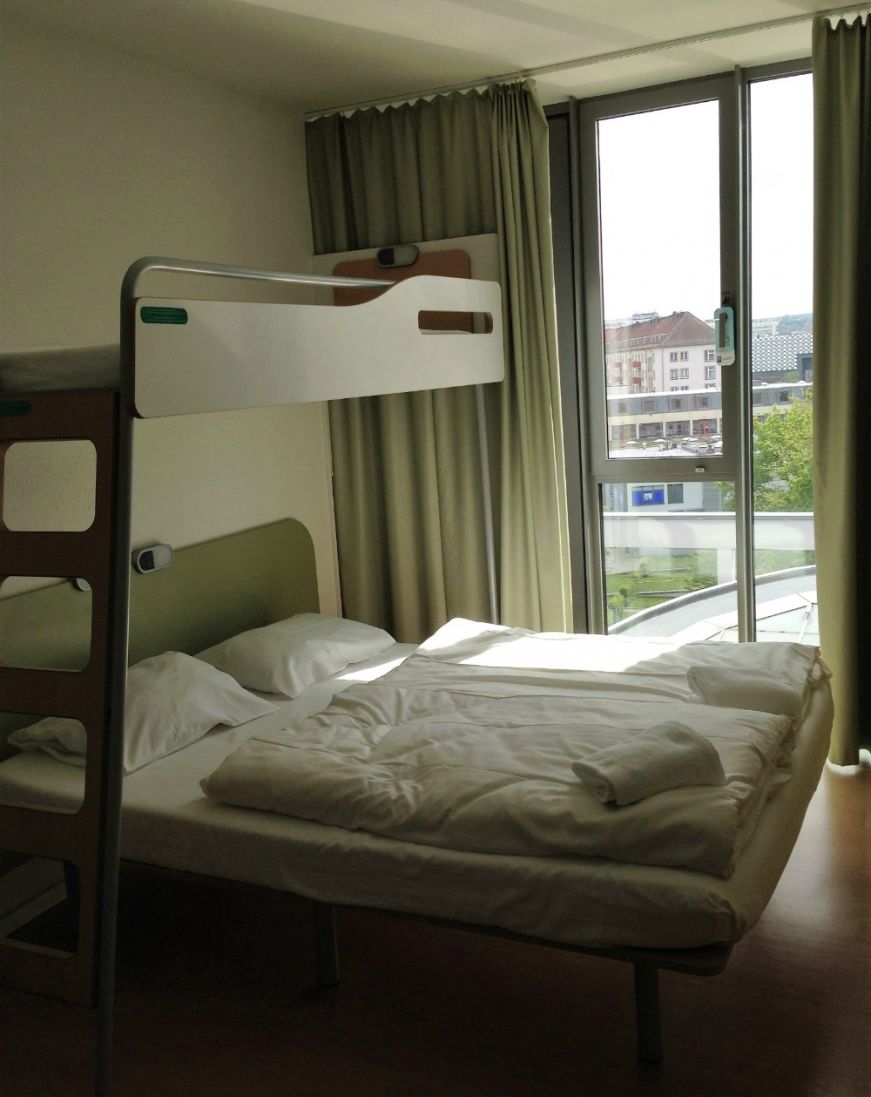Of all the places we visited on our travels across Germany, Dresden is the city I'm most eager to return to.
We spent less than 24 hours in Dresden, just enough time to explore the Baroque Old Town, cross the Elbe River into the New Town for dinner, and make a quick morning visit to two museums. I was struck by the city's dreamy, stage-set quality: most of the "old" buildings actually only date to the 1990s and 2000s. Most of the Old Town was leveled in the infamous WWII firebombing, and the devastation was followed by decades of neglect and meager funding by the East German Communist regime.
Besides reconstructed architecture, Dresden's Old Town is dense with museums. We only had time for the Old Masters Gallery and the Mathematics-Physics Salon, but on a future trip I'm planning to visit the Historic Green Vault, Royal Armory, and Turkish Chamber at the Royal Palace complex, as well as the Albertinum, a collection of artwork from the late 18th century to the present day. Other activities high on my list for my next stay in Dresden are exploring the trendy Outer New Town, spending a couple hours walking along the Elbe River to the Blue Wonder Bridge, and taking a half-day trip to Saxon Switzerland National Park.
Although we spotted a couple of English-speaking tour groups from a river cruise, there were far fewer Americans than in other areas of Germany we visited. Like Trier, Dresden seems to be off the American tourist beaten path, despite its proximity to Berlin and Prague. Don't make the mistake of skipping this city. Although you can hit the sightseeing highlights in a day (and if you only have a day, Dresden is still worth a visit), as your train leaves the station you'll wish you had allotted more time.
What to eat:
Dresden's signature dessert is Eierschecke, a fluffy cheesecake topped with a layer of angel food-style cake. It's available at restaurants and cafes throughout town, but I loved the version at Dresdner Kaffeestübchen (Salzgasse 8), a little coffee shop across the street from the Albertinum. I got a piece to go, and enjoyed in on the steps of the nearby Frauenkirche.
After our afternoon of sightseeing in the Old Town, we crossed the Augustus Bridge into the New Town for dinner at Watzke Brauereiausschank am Goldenen Reiter (Hauptstrasse 1, adjacent to the large golden statue of a man on a horse). Operated by a local brewery, the restaurant serves up a menu of roast chicken, pork, sauerkraut, and a few vegetarian selections, as well as the brewery's unfiltered beer (which you can order in a diminutive 0.3 liter size--perfect for me). There's an English menu and a lovely view of the Old Town from the outdoor seating area.
I ordered the Farmer Flammkuchen, a crisp flatbread spread with garlic sour cream baked down to a thick, ricotta-style consistency and topped with fresh onions, tomatoes, carrots, and spinach. It was a satisfyingly light vegetarian option--one can only eat so many hefty potato dumplings and plates of cheese spätzle. However, Mike took the opposite approach, opting for a stuffed pork schnitzel bursting with cheese, ham, mustard, and pickles and served with fries and a tangy cabbage salad. He still wasn't hungry the next morning.
What to see:
The sprawling Zwinger complex was never a residence; originally, it was an entertainment venue for Saxon princes. Today, it houses three museums: the Old Masters Gallery, the Mathematics-Physics Salon, and the Porcelain Collection. There's no admission fee to wander the courtyard and admire the Nymph's Bath fountain, so stop by the complex for a quick visit if you're skipping the museums.
But even if you only have an hour or two, I highly recommend the Old Masters Gallery, a collection including paintings by Raphael, Titian, Rembrandt, Rubens, and Vermeer, as well as Bernardo Bellotto's depictions of 18th century Dresden. I appreciated that the museum is tightly curated, focusing on a smaller number of definitive works rather than endless jumbled rooms of everything. Since I'm a Vermeer fan, my favorite painting was his luminous Girl Reading a Letter at an Open Window; Mike enjoyed comparing Bellotto's Dresden paintings to the modern city. One of the museum's most popular works is Raphael's Sistine Madonna--not for the serene Virgin Mary, but for the bored cherubs adorning the bottom of the canvas.
Admission to the other two Zwinger museums, the Mathematics-Physics Salon and the Porcelain Collection, is included in your ticket to the Old Master's Gallery. Since Mike is more interested in science than art, he spent a good portion of our museum visit in the Mathematics-Physics Salon, a collection of scientific instruments from the 16th through 19th centuries. I popped in for a quick walk through--the highlight for me was the collection of historic globes.
The Parade of Nobles is a 100 yard long streetside mural depicting a procession of 700 years' worth of Saxon royalty, painted on 24,000 porcelain tiles that survived the firebombing. Since the artist, Wilhelm Walther, accurately depicted the clothing and weapons of each era, walking along the length of the mural is a bit like paging through a centuries-long flip book.
The Frauenkirche has become a symbol of Dresden's rebirth. Destroyed by the WWII firebombing and left as a pile of rubble throughout the Communist era, the Lutheran church was finally reconstructed in the early 1990s through mid 2000s. The facade is polka dotted with stones plucked from the ruins and fitted back into their original places. The original stones are a darker hue due to a natural oxidation process--they weren't scorched by the firebombing. In contrast to the exterior's silent reminder of the destruction of war, the interior of the church is a hopeful space, decorated with pastel pink and baby blue.
The Augustus Bridge spans the Elbe River, connecting Dresden's Old and New Towns. Even if you're focusing your sightseeing on the Old Town, you should still walk across the bridge for a panorama of the Old Town skyline from the opposite bank. If the view looks familiar, it's probably because you admired the 18th century version in Bellotto's paintings at the Old Master's Gallery (mentioned above).

Where to stay:
Like in Nürnberg, we got a great deal by pre-paying for our room at the Ibis Budget Dresden City. The location is perfect: only two tram stops from the train station (within easy walking distance if you don't have heavy luggage) and across the street from the Zwinger. The hotel shares a building with the Altmarkt Galerie, a large shopping mall that includes grocery stores and a bakery right around the corner from the hotel entrance; if you want to save some money, purchase your own breakfast items instead of paying for the hotel buffet. Check out time isn't until noon, which gave us time to squeeze in our visit to the Zwinger museums before we left town.
The rooms do have an odd layout, with a single bunk bed hovering above the queen-sized main bed, a minuscule desk with a stool, and a shower stall in the room instead of the bathroom. It worked for us, but it would be a bit awkward if you needed to get work done or if you weren't on familiar terms with your travel companion.
More posts about my trip to Germany:
